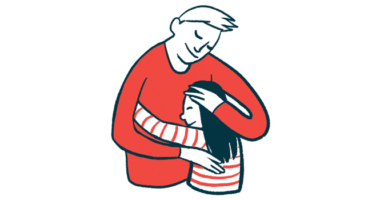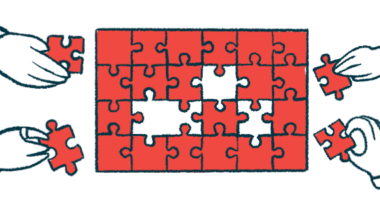Acute porphyria: When good genes go bad
A Q&A with professor and human genetics disease expert John Manak

John Manak, PhD, a professor and human genetics disease expert at the University of Iowa, emailed me to ask if I’d speak to his class about living with acute intermittent porphyria (AIP). The class was called “Good Genes Gone Bad.” Little did I know at the time how much an email would affect my advocacy work and knowledge of my own inherited disease.
Since meeting Manak, whose nickname is “Dr. DNA,” I’ve learned more about human genetic disorders. In honor of Rare Disease Day on Feb. 29, I asked him about what happens when good genes go bad. Excerpts of our conversation follow.
CR: What got you interested in genetics and, specifically, genetic disorders?
JM: I’ve always been fascinated by biology, genetics, and medicine. I took a genetics course with a great professor, which led me to study homeotic genes. During my graduate studies at Columbia University, my developmental biology research naturally transitioned to disease biology, as I was curious to understand how developmental and cellular processes go awry when genes are mutated. I started studying cancer in humans, and during my postdoctoral studies at Stanford University, I studied cancer using fruit flies.
I worked for a while in the private sector, where I learned advanced genomics techniques that paved the way for studies at the University of Iowa. In short, I formed collaborations with colleagues in the medical school to “hunt” for variations in individuals with genetic disorders. This led to discovering genes associated with genetic disorders including spina bifida, cleft lip and/or palate, and bilateral renal agenesis.
In my current lab, along with the aforementioned human studies, I model genetic disease development in fruit flies, with a focus on epilepsy. (Yes, fruit flies can have seizures!) Given the fantastic genetic tools available, we can do things a lot quicker with fruit flies and work out disease mechanisms.
Why did you create a class about human genetic disorders?
There’s a vast chasm between those who do the gene discovery and doctors who interact with patients who have the disorder. Often healthcare providers don’t have genetic expertise to comprehensively inform patients. I developed a course to give people a primer in human disease genetics, because there’s a lot of complex terminology and concepts. “Good Genes Gone Bad” is a general education course that anyone can take, because genetic disorders can impact all of us.
Why the interest in porphyria?
I am interested in porphyria because I’m passionate about understanding human disease genetics in its many forms. I am continually learning about the nuances that differentiate the many porphyrias.
Porphyria is usually inherited. Can you explain how it can be passed on?
For autosomal dominant versions, you have a 50% chance of passing the pathogenic variant on to your child. That doesn’t necessarily guarantee that, even if your child inherits the mutation, he or she will present with severe disease.
In the same family, people inheriting the mutation can have different clinical features, and some may not appear to have the disease at all. We call this “incomplete penetrance with variable expressivity.” It has to do with two things: genetic background (everyone in the same family has a different makeup of genes) and environmental factors.
Why do some people with genetic variation for porphyria never have a symptom?
Most acute porphyrias are autosomal dominant. Let’s look at AIP, which is caused by mutations in the hydroxymethylbilane synthase (HMBS) gene. Effectively, you have two copies of this gene — a perfectly fine copy from one parent but a damaging mutation in the other. Reducing the amount of HMBS is enough to predispose you to the disease. Fifty percent of gene function may or may not be enough for the disease to develop, and how much HMBS product you have can affect severity.
With a reduced overall level of HMBS, the protein may be unable to do its intended job of helping produce heme. Among other functions, heme is required for red blood cells to carry oxygen throughout the body. Buildup of intermediate chemical compounds in the heme biosynthetic pathway leads to the clinical features of AIP.
Describe the genetic challenges in diagnosing acute porphyrias.
For anyone struggling with obtaining a genetic diagnosis for acute porphyria, I hear you. There’s a number of enzymes leading to heme production, and more genes outside this pathway have been identified. Depending on your diagnosis, it’s important to interrogate all relevant genes to identify likely pathogenic variants.
Learn more about porphyria and genetics from Manak during the American Porphyria Foundation’s Rare Disease Day webinar on Feb. 25 at 5 p.m. EST. Email [email protected] to register.
Note: Porphyria News is strictly a news and information website about the disease. It does not provide medical advice, diagnosis, or treatment. This content is not intended to be a substitute for professional medical advice, diagnosis, or treatment. Always seek the advice of your physician or other qualified health provider with any questions you may have regarding a medical condition. Never disregard professional medical advice or delay in seeking it because of something you have read on this website. The opinions expressed in this column are not those of Porphyria News or its parent company, Bionews, and are intended to spark discussion about issues pertaining to porphyria.








Comments